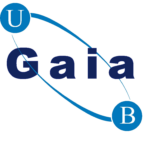Gaia first discovery: surprise space debris
Original link: New Scientist
A robotic galaxy mapper may have just made its first discovery – by surviving an unexpected onslaught of space debris.
Scientists working with the European Space Agency’s Gaia satellite have found that the spacecraft is being peppered by far more micrometeoroids – tiny specks of space dust – than had been anticipated. The strikes shouldn’t put Gaia in danger, although mission scientists will have to watch closely as the spacecraft begins its scientific observations. And the discovery might spell trouble for future spacecraft headed to the same orbital position.
Launched in December 2013, Gaia’s mission is to map roughly a billion stars in our galaxy![]() with high precision. This will help astronomers to understand more about the Milky Way’s structure and evolution. Already, Gaia has hit a few technical snags, such as too much ice on its mirrors and too much sunlight sneaking past its sunshield. To adjust to the troubles, the Gaia team has delayed the first release of scientific data by nine months.
with high precision. This will help astronomers to understand more about the Milky Way’s structure and evolution. Already, Gaia has hit a few technical snags, such as too much ice on its mirrors and too much sunlight sneaking past its sunshield. To adjust to the troubles, the Gaia team has delayed the first release of scientific data by nine months.
Point of contention
Troubleshooting Gaia is no mean feat because the spacecraft is about 1.5 million kilometres from Earth, at the L2 Lagrange point. This is an unusual orbital position where the combined gravitational forces of Earth and the sun allow a satellite to hover at a fixed point on the night side of our planet.
A handful of previous satellites have made the journey to L2 without noticing high levels of micrometeoroids. Still, based on data about space dust around Earth, astronomers had expected that modest amounts would regularly hit Gaia.
To make their measurements, the team needs to know the direction that their satellite is pointing with unprecedented accuracy, which means that Gaia is extremely sensitive to tiny changes in its rotation rate. The detection of such changes revealed the surprising number of nudges from micrometeoroid strikes.
“The rough expectation was one to ten per day,” says Floor van Leeuwen, an astronomer at the Institute of Astronomy in Cambridge, UK. “We are observing at least 500 per day.” The team think that many of the bits of space dust are hitting Gaia’s sunshield, although the origin of the micrometeoroids is not yet clear.
Planet leftovers
“There is a suggestion that a ring of dust surrounds planets such as Earth and Venus, more or less tracing the positions of the Lagrangian points,” says van Leeuwen. And Nigel Hambly, a Gaia scientist based at the University of Edinburgh, UK, suspects that the dust is leftover material from the formation of moons and planets.
The micrometeoroid find is of particular interest to scientists working on NASA’s James Webb Space Telescope (JWST). The infrared observatory will head to L2 in 2018 to study a cornucopia of cosmic mysteries, and micrometeoroid impacts have the potential to decrease the reflectivity of the telescope’s enormous, exposed mirror.
JWST scientist Mark Clampin at the Goddard Space Flight Center in Greenbelt, Maryland, says he and his colleagues have been talking to the Gaia team and will now assess whether the findings differ from their computer predictions of what to expect at L2.
“JWST currently uses a NASA model for the L2 environments, which includes micrometeoroids, so we need to be able to compare the new Gaia results to that model,” he says.






